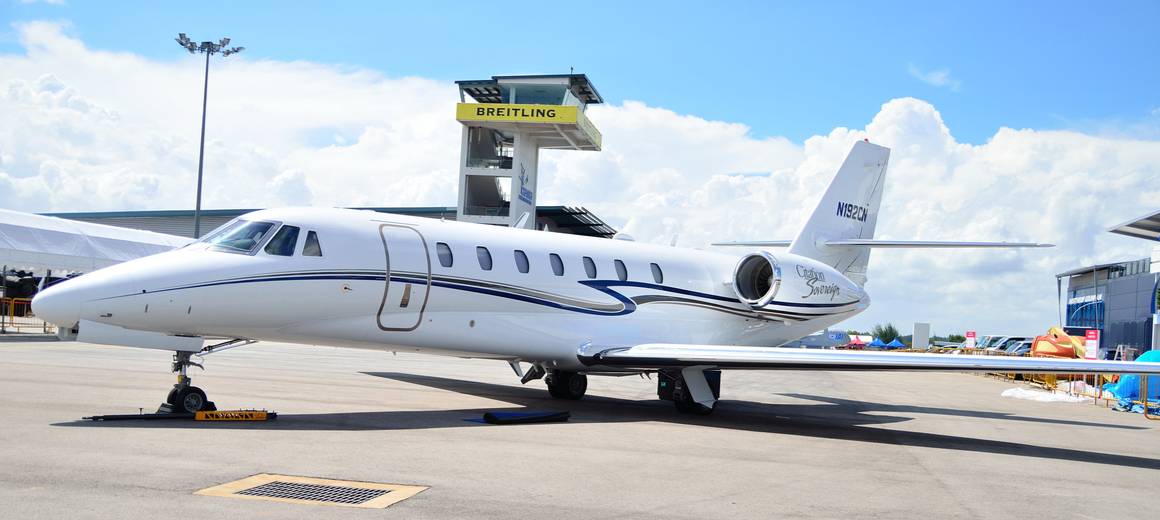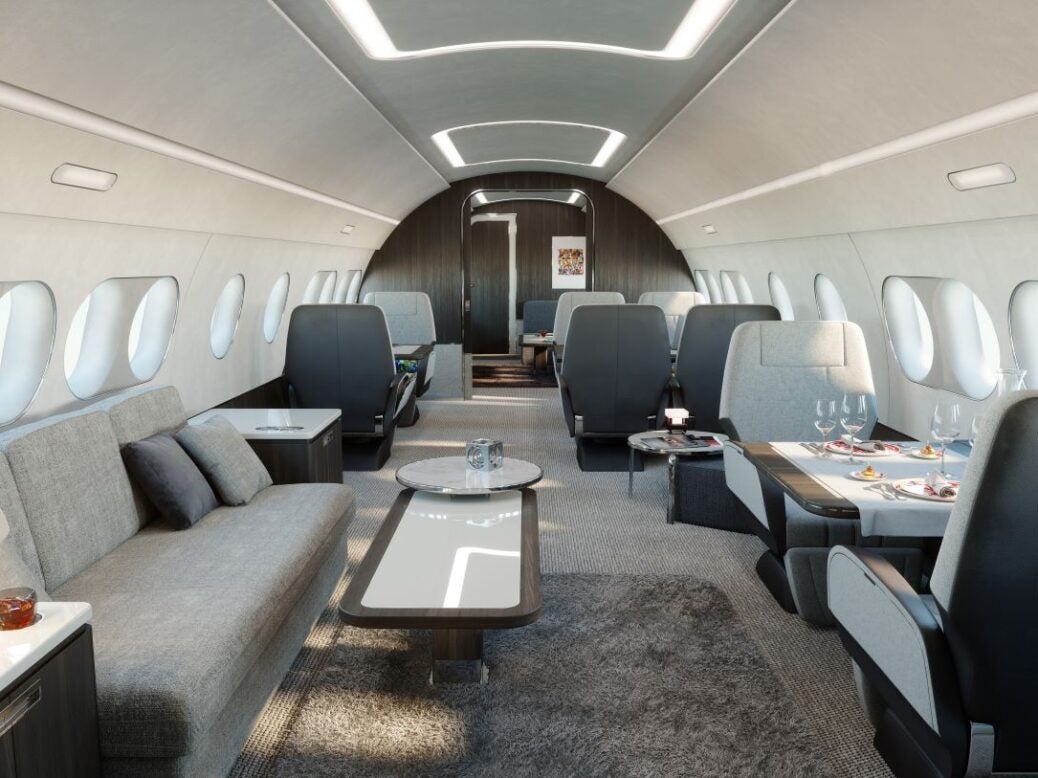In this article, you’ll learn about the different types of jet engines used in aircraft. We’ll explore the basics of turbojet, turbofan, turboprop, and turboshaft engines, and how they differ in terms of design and functionality. By understanding these engine types, you’ll gain a deeper appreciation for the mechanics behind aircraft propulsion and be able to make more informed decisions when it comes to flying private. So let’s dive into the world of aircraft jet engine types and expand our knowledge in this fascinating field.
What Are Aircraft Jet Engine Types
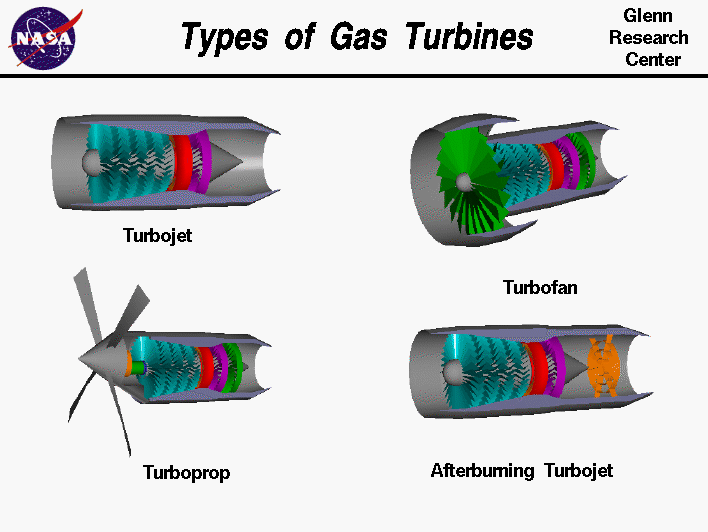
This image is property of www.grc.nasa.gov.
Introduction
When it comes to the world of aviation, understanding aircraft jet engines is crucial. These powerful engines are responsible for propelling aircraft through the air and allowing for safe and efficient travel. In this article, we will delve into the various types of jet engines commonly used in aviation. By gaining a deeper understanding of these engines, you will be better equipped to appreciate the complexity and importance of this fundamental component of an aircraft.
Turbojet Engines
Basic functioning of turbojet engines
Turbojet engines are one of the oldest and simplest types of jet engines. These engines consist of three main components: the air intake, the combustion chamber, and the nozzle. The basic functioning of a turbojet engine involves the intake of air, compression of that air, fuel combustion, and the expulsion of exhaust gases through the nozzle, which creates thrust. The high-speed exhaust gases provide the necessary force to propel the aircraft forward.
Advantages and disadvantages of turbojet engines
One of the main advantages of turbojet engines is their high thrust-to-weight ratio, which allows for fast acceleration and high speeds. Additionally, turbojet engines are known for their ability to operate efficiently at high altitudes. However, turbojets are not without their disadvantages. They tend to be loud, less fuel-efficient compared to newer engine types, and have limited power output at low speeds.
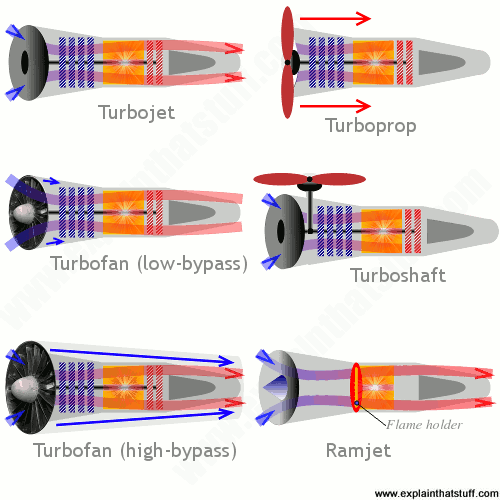
This image is property of cdn4.explainthatstuff.com.
Fan Jet Engines
Overview of fan jet engines
Fan jet engines, also known as turbofan engines, have become the dominant type of engine in commercial aviation. These engines are a variation of the turbojet design, but with the addition of a fan at the front. The fan draws in a large volume of air, which bypasses the combustion chamber and is discharged directly out of the back of the engine, creating additional thrust. The exhaust gases from the combustion chamber also contribute to the overall propulsion.
Components and working principle of fan jet engines
Fan jet engines consist of several key components, including the fan, the compressor, the combustion chamber, and the turbine. The fan is driven by the turbine and is responsible for drawing in and compressing air. The compressed air is then mixed with fuel and ignited in the combustion chamber, creating hot exhaust gases. These gases pass through the turbine, which extracts energy to drive the compressor and fan. The remaining energy propels the aircraft forward, providing the necessary thrust for flight.
Turbofan Engines
Key features of turbofan engines
Turbofan engines offer several key features that make them highly efficient and ideal for commercial aviation. One of the main advantages is their high bypass ratio, which refers to the amount of air that bypasses the combustion chamber compared to the amount that goes through it. The bypass air provides a significant portion of the total thrust and contributes to the engine’s fuel efficiency.
Variants of turbofan engines
There are several variants of turbofan engines, each with its own unique characteristics and applications. High-bypass turbofan engines are commonly seen in commercial airliners and provide a balance between efficiency and thrust. Low-bypass turbofan engines, on the other hand, are typically used in military aircraft where speed and maneuverability are of greater importance. Ultra-high-bypass turbofan engines offer even higher bypass ratios, further improving fuel efficiency.
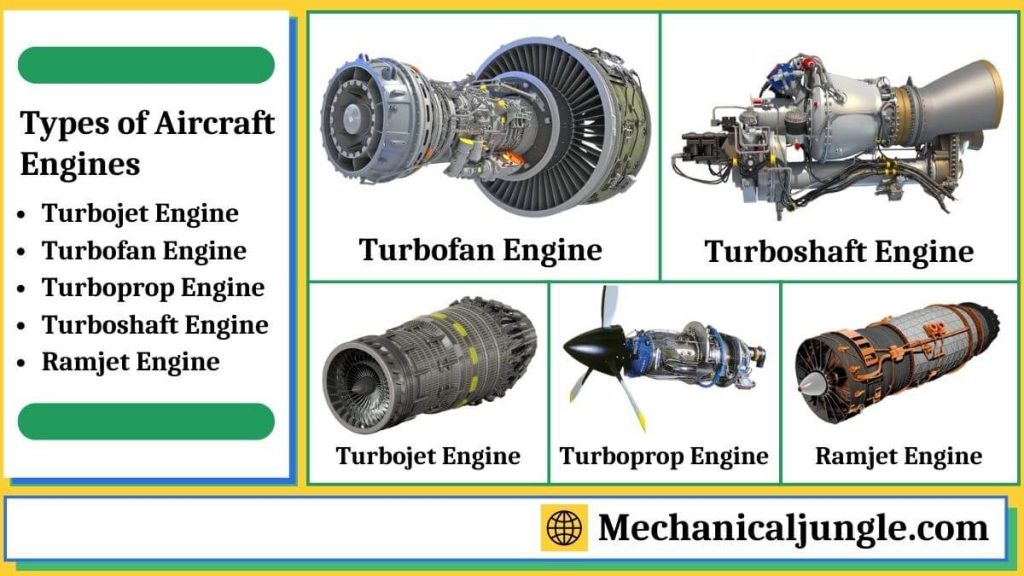
This image is property of mechanicaljungle.com.
Turboprop Engines
Explanation of turboprop engines
Turboprop engines are a type of jet engine commonly used in smaller aircraft, such as regional airliners and business jets. These engines combine the principles of a gas turbine engine with a propeller. The power output of the engine is used to drive the propeller, which generates the majority of the thrust required for flight.
Applications and benefits of turboprop engines
Turboprop engines are particularly suited for short-haul flights and operations in regions with shorter runways. They offer several benefits, including better fuel efficiency at lower speeds, lower noise levels compared to turbojets, and the ability to operate from shorter runways. This makes turboprop engines a popular choice for regional airlines and private aviation companies.
Ramjet Engines
Understanding ramjet engines
Ramjet engines are a type of air-breathing jet engine that do not have any moving parts. These engines rely on the forward motion of the aircraft to compress incoming air and achieve combustion. Ramjets are capable of operating at high speeds, making them ideal for supersonic flight.
Limitations and uses of ramjet engines
One major limitation of ramjet engines is that they require a minimum speed to start functioning effectively, typically around Mach 3. This limits their use to high-speed applications, such as missiles and experimental aircraft. Ramjets are also unable to produce thrust at subsonic speeds, which further restricts their practical use in everyday aviation.
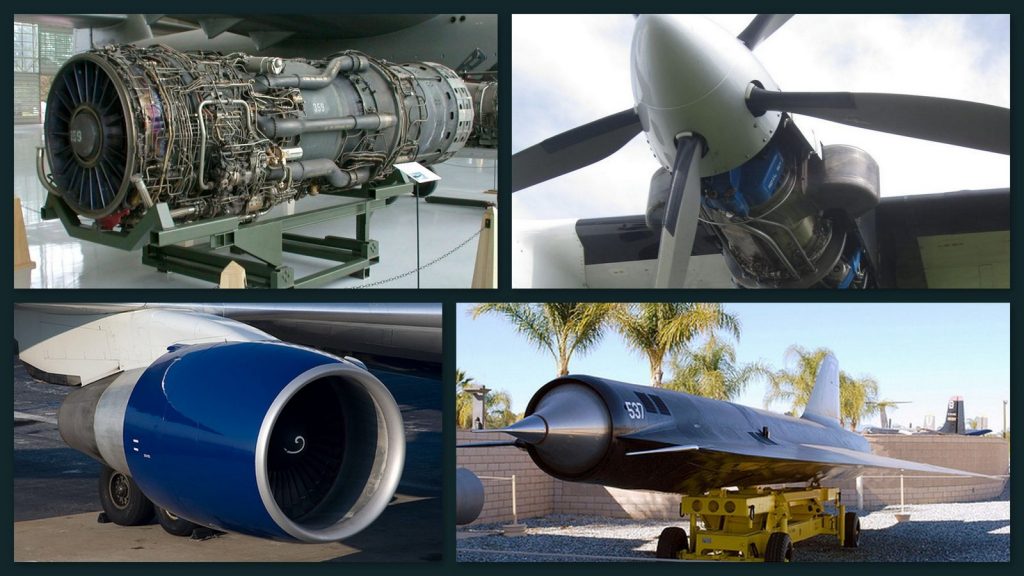
This image is property of mechstuff.com.
Scramjet Engines
Introduction to scramjet engines
Scramjet engines are similar to ramjets, but they operate at even higher speeds. The main difference between the two is that scramjets allow supersonic combustion within the engine, whereas ramjets require subsonic combustion. This allows scramjets to achieve even greater speeds and efficiency.
Unique characteristics and applications of scramjet engines
Scramjet engines are primarily used for hypersonic flight, where speeds exceed Mach 5. These engines offer the potential for high-speed transportation and access to space. However, scramjets are still in the experimental stage and face significant technical challenges before they can be widely adopted for commercial use.
Piston Engines
Brief overview of piston engines
While not technically jet engines, piston engines have played a significant role in aviation history. These engines use reciprocating motion to convert fuel combustion into mechanical energy. Piston engines were commonly used in early aircraft, but have since been replaced by more efficient and powerful jet engines.
Comparison with other jet engine types
Piston engines have several advantages over jet engines, including simpler construction, lower maintenance requirements, and lower operating costs. However, they lack the high power-to-weight ratio and efficiency of jet engines, making them unsuitable for modern commercial aviation.
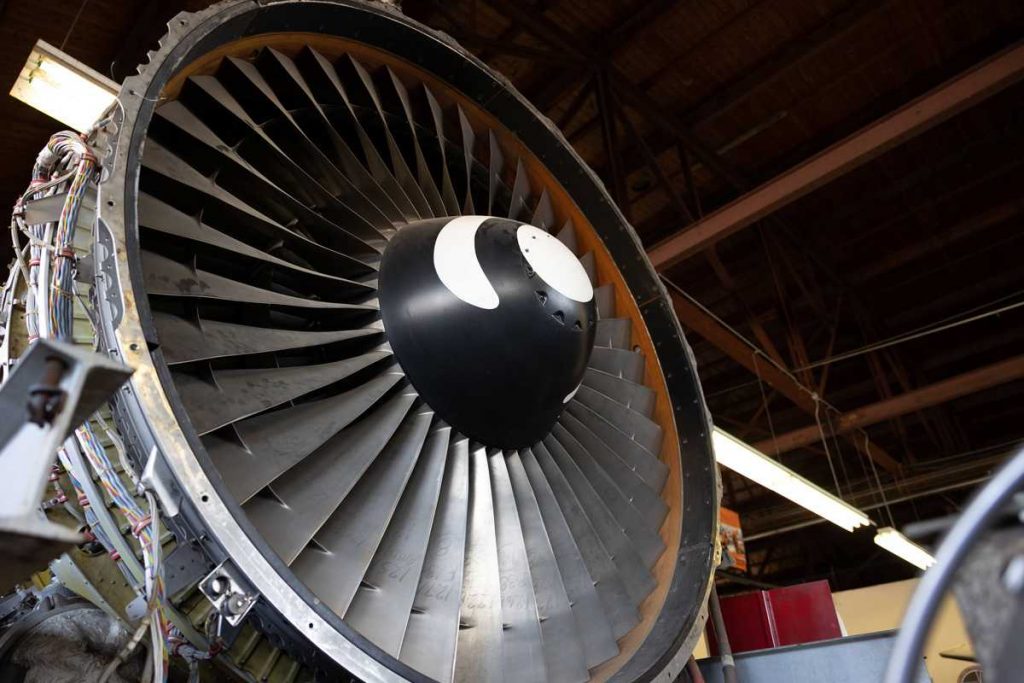
This image is property of u8d6i9n4.rocketcdn.me.
Hybrid Engines
Explanation of hybrid engines
Hybrid engines combine the benefits of different propulsion technologies, such as jet engines and electric motors. These engines are designed to optimize fuel efficiency, reduce emissions, and enhance overall performance. Hybrid engines are still in the early stages of development and are not yet widely used in commercial aviation.
Advantages and potential in aviation industry
Hybrid engines offer several advantages, including reduced fuel consumption, lower emissions, and improved range. They have the potential to revolutionize aviation by providing cleaner and more sustainable propulsion options. As technology continues to advance, hybrid engines may become a viable alternative for both commercial and private aircraft.
Rocket Engines
Overview of rocket engines
Rocket engines differ from traditional jet engines in that they do not require air for combustion. Instead, they carry both their fuel and oxidizer, allowing them to operate in the vacuum of space. Rocket engines generate thrust by expelling high-speed exhaust gases at a rapid rate.
Differences from traditional jet engines
Rocket engines are primarily used for space exploration and satellite launches. Unlike jet engines, rocket engines do not rely on atmospheric air for propulsion, making them capable of achieving higher speeds and reaching orbit. However, rocket engines have limited applications in commercial aviation due to their high fuel consumption and specific requirements for space travel.
Rotary Engines
Understanding rotary engines
Rotary engines, also known as Wankel engines, are a type of internal combustion engine that uses a rotor instead of pistons to produce power. These engines offer compact size, high power density, and smooth operation. Rotary engines were once used in some aircraft, but their popularity has waned in recent years.
Applications and considerations for rotary engines
Rotary engines were historically used in small aircraft due to their lightweight design and high power output. However, rotary engines have inherent drawbacks, such as limited durability and relatively high fuel consumption. These issues, combined with advancements in other engine types, have led to the decline in rotary engine usage in aviation.
Electric Propulsion
Emerging technology in aircraft propulsion
Electric propulsion is an emerging technology that aims to replace traditional jet engines with electric motors. This propulsion system relies on the use of batteries or fuel cells to power the electric motors, which drive the aircraft’s propellers or fans. Electric propulsion offers the potential for quieter, cleaner, and more efficient flying.
Benefits and challenges of electric propulsion
Electric propulsion offers several benefits, including reduced noise levels, lower emissions, and potentially lower operating costs. However, there are significant challenges that need to be overcome, such as limited battery capacity, weight limitations, and the lack of an extensive charging infrastructure. Despite these challenges, the aviation industry is actively exploring electric propulsion as a viable alternative for future aircraft.
Conventional vs. Unconventional Jet Engines
Comparison between conventional and unconventional jet engines
Conventional jet engines, such as turbojets and turbofans, have been the industry standard for many years. However, unconventional jet engines, such as ramjets and scramjets, offer unique advantages and advancements in propulsion technology. The comparison between conventional and unconventional jet engines revolves around factors such as speed, efficiency, and specific application requirements.
Future trends in jet engine development
The future of jet engine development is focused on improving fuel efficiency, reducing emissions, and exploring alternative propulsion technologies. Advancements in materials, aerodynamics, and combustion processes are driving innovation in the field. In addition, the integration of electric propulsion and sustainable fuels is expected to play a significant role in shaping the future of jet engines.
Conclusion
Aircraft jet engines are a critical component of aviation, enabling safe and efficient travel. In this article, we have explored the various types of jet engines, including turbojets, fan jets, turbofans, turboprops, ramjets, scramjets, piston engines, hybrid engines, rocket engines, rotary engines, and electric propulsion. Each type offers its own unique characteristics and benefits, catering to specific applications and requirements. By understanding the different jet engine types, you can make informed decisions when it comes to selecting the appropriate engine for your aircraft.



